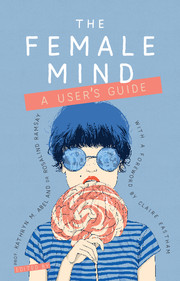Foreword
Published online by Cambridge University Press: 02 January 2018
Summary
Until I reached my early 20s, I was happy to ignore the social realities of being a woman. As a child, I had an anxious temperament and I understood that a lot would be expected of me as an adult. It's no secret that the 21st-century woman is supposed to ‘do it all’. On top of the career, relationships, babies and having the perfect body (cheers for that), women are also expected to be the caregivers, the domestic goddesses and the ones who remember everybody's birthdays. Never mind if you have the flu or your period is giving you grief, those plates mustn't stop spinning, and perish the thought that you drop one. I was intimidated, but thought that if other women could do it without complaint, then surely I could, too.
By the age of 24, that anxious ‘temperament’ of mine morphed into a full-blown anxiety disorder, eventually triggering a breakdown. I felt like a failure – everybody else seemed able to cope with life just fine, so what was wrong with me? I felt on edge constantly, tortured by panic attacks and bouts of insomnia. I was lost.
In my quest for knowledge about my condition, I devoured a great deal of reading material. Unfortunately, I only understood around 9% of what I read, and the dictionary became my best friend. The more I read, the more frustrated I became. It was all so complicated and scary. That's why I started my blog, We're All Mad Here, to write about mental health without the use of unexplained medical jargon.
In short, what I was looking for was this book.
I'll admit that when I was originally approached to write the foreword I rolled my eyes. ‘Here we go again,’ I thought, ‘another stuffy academic textbook that only PhD students will understand’. However, within minutes of reading the first chapter I knew I was mistaken.
- Type
- Chapter
- Information
- The Female MindUser's Guide, pp. x - xiPublisher: Royal College of PsychiatristsPrint publication year: 2017

